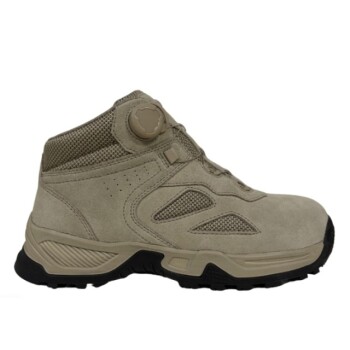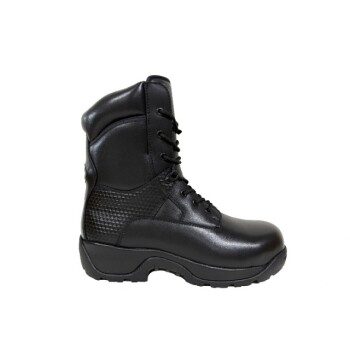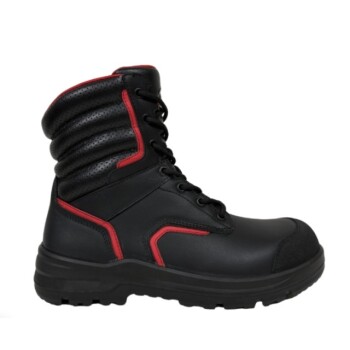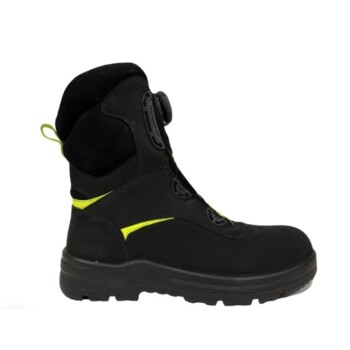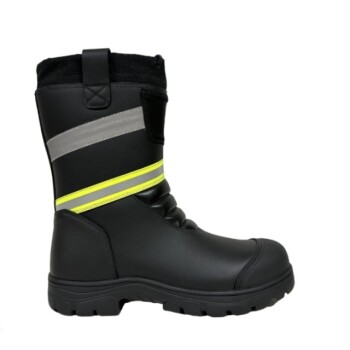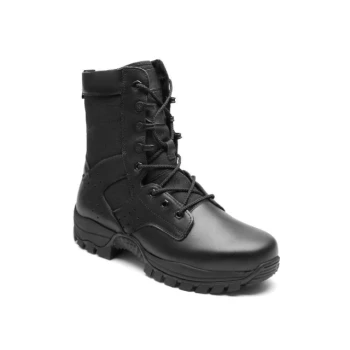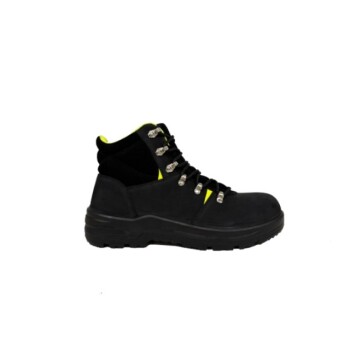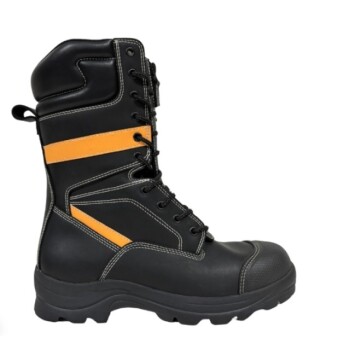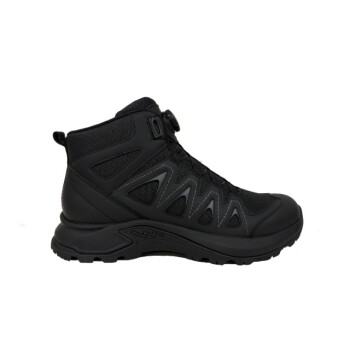At its core, a kiltie boot is any boot that features a "kiltie"—a distinct, often fringed, piece of leather that sits on top of the tongue and underneath the laces. This component acts as a protective guard for the most vulnerable part of the boot's upper, shielding it from debris and wear.
The kiltie is a functional component first and a style element second. It originated as a practical solution to protect the boot's tongue and laces in demanding work environments, a heritage that defines its rugged character.
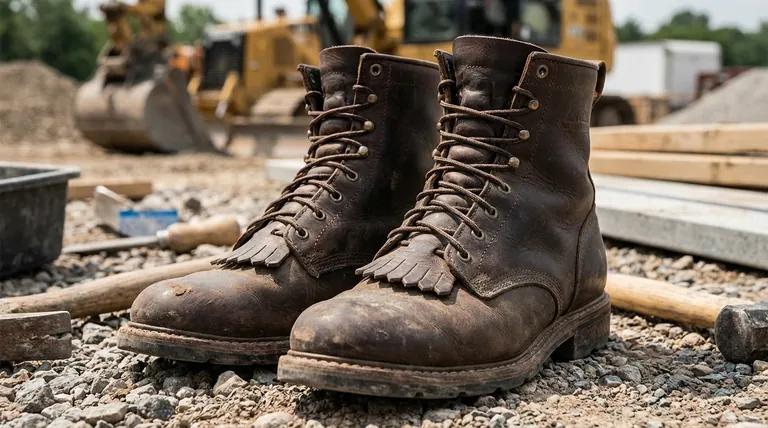
The Core Function: More Than Just Decoration
While the kiltie adds a unique aesthetic, its design is rooted in pure utility. It serves as a removable shield that extends the life of the boot.
Protecting the Laces and Tongue
The most direct purpose of a kiltie is to protect the boot's tongue from abrasion and prevent the laces from fraying or snapping due to friction and exposure to dirt or mud.
Cushioning the Instep
The extra layer of leather provides additional padding over the instep. This can increase comfort by distributing the pressure from tightly cinched laces, especially on sturdy, unlined work boots.
Preventing Debris Entry
In environments like forests, workshops, or construction sites, the kiltie acts as a barrier. It blocks sawdust, dirt, and small pebbles from working their way under the laces and into the boot.
A Signature of Rugged Boot Styles
You won't find kilties on every type of boot. Their presence is a clear signal of a boot designed for durability and hard use, often made from resilient full-grain leather that molds to the foot over time.
The Work Boot Connection
Kilties are most commonly found on work boots. These boots are built to be rugged and protective, featuring durable lug soles and sturdy construction for demanding professions. The kiltie is a natural extension of this protective philosophy.
The Packer Boot Heritage
Packer boots, known for their rugged charm and higher cut for enhanced ankle support, also frequently feature kilties. This style is designed for long days of outdoor work, where the kiltie's protective qualities are invaluable.
Why Not on Other Boots?
You typically won't see this feature on tactical boots, which prioritize being lightweight and flexible for a wide range of motion. Likewise, sleeker styles like trench boots omit the kiltie to maintain a lower, more refined profile suitable for casual wear.
Understanding the Trade-offs
Adding a kiltie to a boot is a choice with clear benefits and minor considerations.
The Benefit: Enhanced Durability
The primary advantage is simple: your boots last longer. By taking the brunt of the abuse, the removable kiltie saves the underlying tongue and laces from damage, which are often difficult parts of a boot to repair.
The Downside: Added Bulk
A kiltie adds another layer of material to the boot's upper. For those seeking a minimalist or streamlined look, this can feel like unnecessary bulk.
A Matter of Aesthetics
Ultimately, the kiltie has evolved into a distinct style statement. Because they are almost always removable, the owner can decide whether to use them for function, style, or not at all.
Making the Right Choice for Your Goal
Whether a kiltie is right for you depends entirely on your needs and environment.
- If your primary focus is maximum durability and protection: A kiltie is a highly practical addition for work in harsh environments like construction, forestry, or farming.
- If your primary focus is a traditional, heritage aesthetic: The kiltie offers a classic look synonymous with rugged, high-quality workwear and packer boots.
- If your primary focus is a streamlined, casual style: You will likely prefer to remove the kiltie or choose a boot style that doesn't include one from the start.
Ultimately, the kiltie is a classic boot feature that masterfully blends practical protection with timeless style.
Summary Table:
| Feature | Purpose | Common Boot Styles |
|---|---|---|
| Kiltie (Fringed Leather Guard) | Protects tongue & laces, blocks debris, cushions instep | Work Boots, Packer Boots |
| Core Benefit | Extends boot life by shielding vulnerable areas | Ideal for construction, forestry, farming |
| Consideration | Adds a layer of bulk; removable for style preference | Not typically found on tactical or streamlined boots |
Need durable, protective footwear built to last?
As a large-scale manufacturer, 3515 produces a comprehensive range of rugged work boots, including classic kiltie styles, for distributors, brand owners, and bulk clients. Our production capabilities ensure top-tier durability and protection for demanding environments.
Contact us today to discuss your footwear needs and discover how we can bring quality and reliability to your product line.
Visual Guide
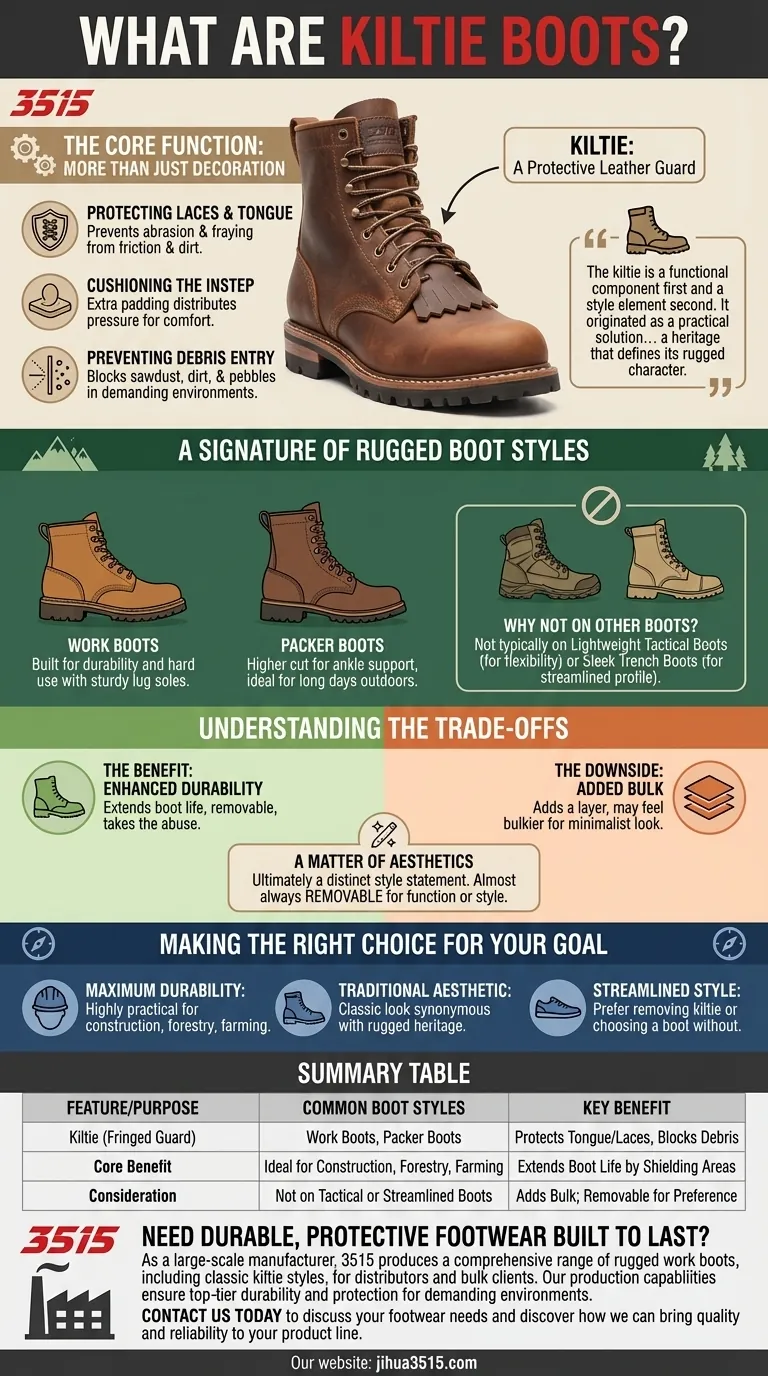
Related Products
- Safety Footwear Wholesale Manufacturer for Custom OEM/ODM Production
- Premium Wholesale Wheat Nubuck Safety Boot with Rapid Lacing System
- Custom Wholesale Leather Safety Boots Direct Factory Manufacturing
- Customizable Anti-Smash Safety Boots for Wholesale & Private Label Manufacturing
- Premium Grain Leather Safety Boots for Bulk Supply
People Also Ask
- Is safety-toe as good as steel toe? Choose the Right Protection for Your Job
- What are the differences between steel toe, composite toe, and alloy toe Wellington boots? Choose the Right Safety Toe for Your Job
- What are OSHA approved shoes? Understanding the Correct Standards for Workplace Safety
- What do heavy duty boots do? Protect Your Feet in Demanding Work Environments
- What are the cultural perspectives on wearing shoes in the house? A Guide to Home Etiquette & Hygiene

